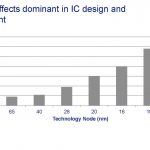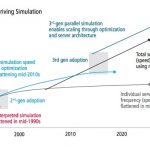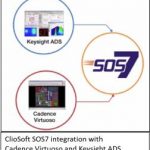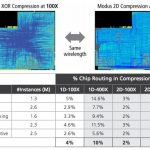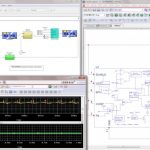The EDA & IP industry enjoys high growth for the Design IP segment, but a detailed analysis tool is missing. IPnest will address this need in 2017, expecting the IP vendors’ contribution! If we consider the results posted last March by the ESD Alliance, the EDA (and IP) industry is doing extremely well, as the global revenue has… Read More
Tag: cadence
SPIE 2017 ASML and Cadence EUV impact on place and route
As feature sizes have shrunk, the semiconductor industry has moved from simple, single-exposure lithography solutions to increasingly complex resolution-enhancement techniques and multi-patterning. Where the design on a mask once matched the image that would be produced on the wafer, today the mask and resulting image … Read More
PowerTree — a data repository and simulation platform for PCB power distribution networks
The difficulty of managing the power domains on a complex SoC led to the development of a power format file description, to serve as the repository for data needed for functional and electrical analysis (e.g., CPF, UPF). Yet, what about complex printed circuit boards? How can the power domain information be effectively represented… Read More
CEO Interview: Srinath Anantharaman of ClioSoft
It will soon be 20 years since ClioSoft started its journey of selling design management software for the semiconductor industry. It was a slow start considering that designs were relatively small and only digital front-end designers had begun to realize the importance of version control and design management. With open source… Read More
Making Functional Simulation Faster with a Parallel Approach
I’ll never forgot working at Intel on a team designing a graphics chip when we wanted to simulate to ensure proper functionality before tapeout, however because of the long run times it was decided to make a compromise to speed things up by reducing the size of the display window to just 32×32 pixels. Well, when first silicon… Read More
Qorvo Uses ClioSoft to Bring Design Data Management to RF Design
A couple weeks ago I gave a heads-up about a webinar that was being hosted by ClioSoft, Qorvo and Keysight. The topic of the webinar was how to manage custom RF designs across multiple design teams and CAD flows. The webinar was held on February 1st and included presentations by Marcus Ray of Qorvo and Michele Azarian of Keysight.
Much… Read More
Getting Ready for Bluetooth-5 Verification
Bluetooth has been very successful for many years, but arguably trapped in a niche, at least for us consumers, as a short-range wireless alternative to a wire connection – to connect your phone to a car or speakers for example. (In fairness I should add that the 4.2 version has improved range and Bluetooth has already become quite … Read More
Reducing the Cost of SoC Testing
Every year certain technology themes appear, like at ITC this year a big theme was how to reduce the cost of SoC testing. I spoke with Rob Knoth of Cadence by phone to hear more about this cost of test theme. Rob gave me an example of an SoC that takes 27 seconds on a tester, so at $0.04 per second in test costs amounts to $1.08 per part. If you… Read More
Cadence Design Secures Photonic Beachhead
I had the privilege to attend a five-day PIC (photonic integrated circuit) training hosted by 7-Penniesand Tektronix in San Jose, CA this week. This training was quite comprehensive and covered photonic materials and platforms, design automation, fabrication, packaging and test. It also included invited talks from photonic… Read More
System-level Design for IoT and Automotive
Several years ago a former EDA co-worker went to work for MathWorks, so I started paying a lot more attention to this privately held company that is well known for the MATLAB language and analysis environment. Engineers at MathWorks have created a graphical environment called Simulink for both simulation and model-based design… Read More


